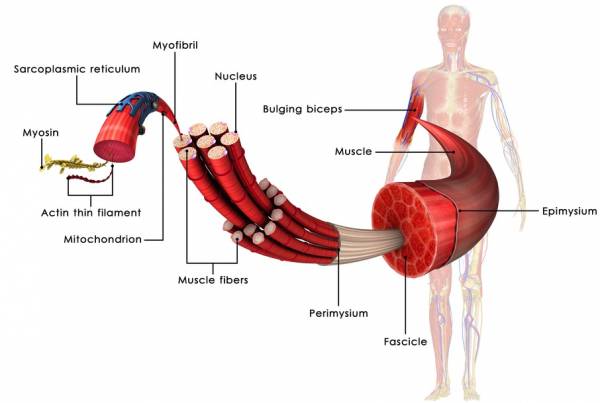Many lifters acknowledge that eccentric muscle actions may have a greater potential to elicit gains in strength and size. In a recent Journal of Strength and Conditioning Research study, researchers provided some advice to help us design good eccentric lifting programs.
What the research says:
- Eccentric one-rep-max (1RM) on the bench press was about 50lb heavier on average than the concentric version.
- At 90% 1RM, subjects could do 3-7 reps on the concentric portion of the bench press, but could do 4–11 reps on the eccentric portion.
![]()

The differences between eccentric and concentric actions go beyond the usual explanation of lengthening and shortening of muscles under load. It’s important to know the differences that occur at the filament level during concentric contractions, normal muscle lengthening, and eccentric contractions.
Concentric Muscle Contraction
The muscle is shortened and your body moves the external resistance. A concentric contraction is performed by myosin and actin filaments. The myosin filaments do the heavy lifting, so to speak, by chemically attaching to the actin filaments and then pulling them. This moves the actin filaments and the rest of that region of muscle into a shortened position. At that point, the myosin chemically detaches from the actin, elongates, and starts the process over again.
Normal Muscle Lengthening
Normal lengthening with no load is a gentle process that requires energy to perform. Much like the contraction above, unloaded muscle lengthening requires energy to unbind the myosin from the actin so that the muscle can lengthen smoothly. In fact, the lack of availability of energy to release these bonds is what causes rigor mortis after a person dies.
Eccentric Muscle Contraction
Most people think of the eccentric action process as being like the muscle lengthening described above, but it is not. In an eccentric action the muscle lengthens, but because it is resisting a load, the myosin still binds chemically with the actin. Instead of chemically releasing the crossbridge, or the point of contact between the two, the fibers are mechanically separated. That is to say, they are forcefully ripped apart.
For these reasons, eccentric actions cause more muscle damage and usually more soreness than concentric actions. They may also result in greater strength and size gains, due the increased stimulus. However, the researchers in the Journal study noted that most of the research done on the capabilities of muscles in exercise were done on either concentric-only actions or the standard concentric and eccentric muscle action.
RELATED: 6 Powerful Benefits of Eccentric Training
Study Design
Thirty men were tested for their one-rep-max (1RM) on the bench press, both concentric-only and eccentric-only. Using those maxes, the subjects performed the most reps (again, either concentrically or eccentrically) at 60%, 70%, 80%, and 90% of each action’s respective max.
Results
The eccentric 1RM on the bench press was about 50lb heavier on average than the concentric version. At 90% 1RM, subjects could do 3-7 reps on the concentric portion of the bench press, but could do 4–11 reps on the eccentric portion. Keep in mind, the 4–11 reps was with 90% of the already heavier eccentric max. With the other intensities, the subjects performed roughly the same number of reps on the eccentric and concentric actions.
Based on these results, the researchers concluded:
These data indicate that eccentric muscle actions yield increased force capabilities (~120%) as compared to concentric muscle actions in the bench press and may be less prone to fatigue, especially at higher intensities. These differences suggest a need to develop unique strategies for training eccentrically.
Because normal gym training involves moving a weight eccentrically and concentrically in the same rep, the eccentric portion of the lift is often underloaded. The researchers suggested a portion of the strength and conditioning program be focused on properly loaded eccentric-only actions in order to achieve the greatest results.
References:
1. Stephen Kelly, et. al., “Comparison of Concentric and Eccentric Bench Press Repetitions to Failure,” Journal of Strength and Conditioning Research 2014, DOI: 10.1519/JSC.0000000000000713
Photo courtesy of Shutterstock.






